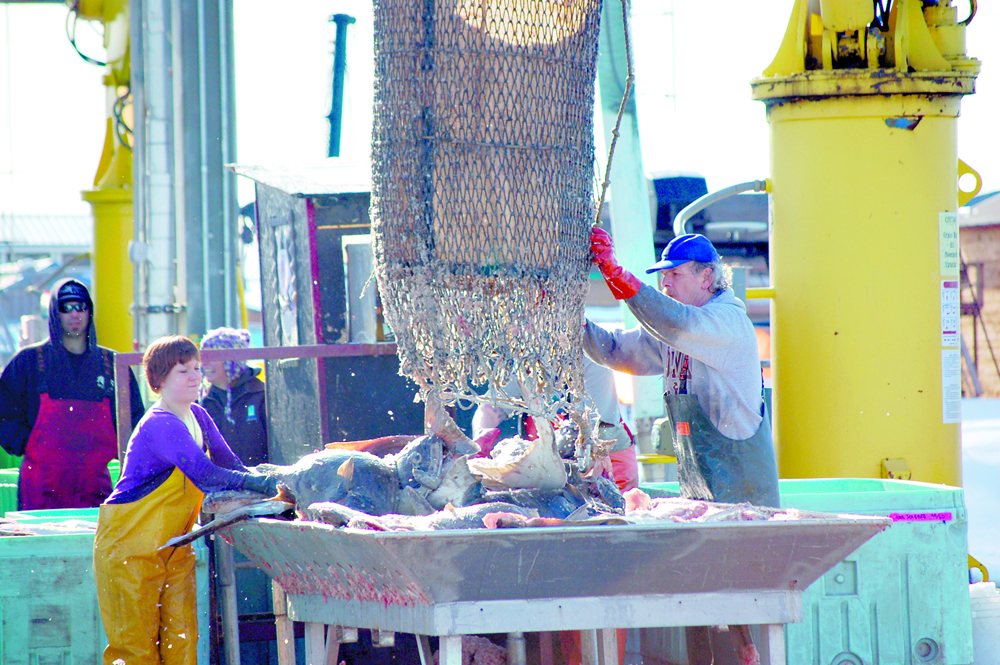Halibut fishermen in most areas of the state got good news last week when the International Pacific Halibut Commission raised quotas for all areas except 3A, the Central Gulf of Alaska that includes the three busiest halibut ports in the state.
Area 2C, Southeast Alaska, saw the biggest increase with a total quota of 4.95 million pounds, up 6 percent. Out of that, 906,000 pounds goes to the guided sport fishery, and 120,000 pound gets set aside for commercial wastage/mortality, leaving 3.92 million pounds for the directed commercial fishery.
Area 3A, with the ports of Homer, Seward and Kodiak, saw the only decrease, dropping 5 percent, with a total quota of 9.6 million pounds. Out of that, 1.8 million pounds goes to the guided sport fishery, and 450,000 pounds is set aside for commercial wastage/mortality, leaving 7.33 million pounds for the directed commercial fishery.
The guided sport wastage is included in that sector’s quota and not broken out separately.
Those are the only areas that split the quota between guided sport and directed commercial fisheries.
Area 3B, Western Gulf of Alaska, got a 2 percent increase to 2.71 million pounds.
Area 4A, Eastern Aleutian Islands, stayed flat at 1.39 million pounds.
So did Area 4B, Western Aleutian Islands, at 1.14 million pounds.
Area 4CDE, Bering Sea, rose slightly to 1.66 million pounds.
There has been cautious optimism expressed around the industry, but cautious may be the key word, according to halibut fisherman and North Pacific Fisheries Association founder Buck Laukitis.
“I thought for a lot of years we were way too high (with the quotas),” he said, “and now I think we’re seeing some rebuilding.”
Laukitis does not necessarily think the stocks have hit bottom, but that some areas might be about where they need to be to start coming back up.
“Three million in (Area) 3B is probably a good level to build it back up.”
He said he personally had really good fishing in Area 4A last season, but it was not the same for everyone.
“I think (the IPHC) catch levels are pretty conservative and will lead to some more rebuilding.”
Laukitis, who attended the IPHC
meetings, said that the reason the Area 3A quota went down had something to do with splitting the huge area, from close to Yakutat to the south end of Kodiak Island, into two areas at the request of fishermen and fishing groups, for the first time.
“What they said was that the eastern areas had really good surveys,” he said. “Really good.”
He said some of the eastern surveys were up as much as 100 percent, but the western areas were down, and put it all together, Area 3A was down.
IPHC’s quantitative scientist Ian Stewart corroborated that.
“When we look at the survey results, we can break it up into east and west in the broader 3A area,” Stewart said. “We have seen stronger downward trends in the western side of 3A than on the eastern side.”
Stewart said that it was not universal over the eastern part of Area 3A.
“Particularly in 2015 we saw an increase in the Yakutat area, although we did see a decrease in the Fairweather grounds which is south of Yakutat, so it wasn’t just east and west. … Generally a pattern that we’ve seen in east and west, over the past few years, is that the eastern side of 3A seems to be a bit healthier than the western side,” Stewart said.
Laukitis said that areas of 3A that have generally been go-to areas for halibut fishing showed poor results in the surveys.
“Portlock Bank was dead, Albatross Bank was dead. Those used to be the hot spots,” he said.
Stewart said that the other contributing factor is the size of fish, and while they are starting to see some increase in the size of fish, particularly in Area 2, they have not seen the same thing in Areas 3A and 3B.
“So Area 3A has got both things going on, both a downward trend in the survey as well as the downward trend in the size of fish,” Stewart said.
Both Stewart and Laukitis expressed concern about the upcoming year-classes, which shows that there is not a large group of youngsters growing into marketable-sized halibut ready for harvest.
“We’ve got about 10 year-classes in the water that we don’t know anything about right now, Stewart said. “We don’t really get a good read on them until they’re 10 to 12 years old, until we’ve seen them several times, both in the survey and the fishery.”
Stewart said there is evidence of a relatively strong year-class within the Bering Sea, but that has yet to make an appreciable effect on the rest of the stocks.
“Although we do expect that some of those fish are moving out of Area 4 (CDE, Bering Sea) and into the other regulatory areas, at the moment we don’t have any evidence of a really strong year-class coming through,” Stewart said.
Also at the annual meeting, the IPHC approved the retention of halibut caught incidentally in sablefish pots in the Gulf of Alaska, so long as the person with sablefish IFQs also has halbut IFQs.
The proposal to reduce the legal halibut size limit from 32 inches to 30 inches failed. That proposal has come up before, and largely has failed due to opposition from processors who face market pressures to smaller fillet sizes.
Another proposal to limit the maximum halibut size to 60 inches to protect large spawning females also failed. It would prove difficult to get large fish aboard to measure them without using gaffs, which would prove lethal.
Also, David Wilson will succeed Bruce Leaman as executive director of the International Pacific Halibut Commission effective August 2016.Leaman is retiring after 20 years at the post.
Cristy Fry can be reached at realist468@gmail.com.


